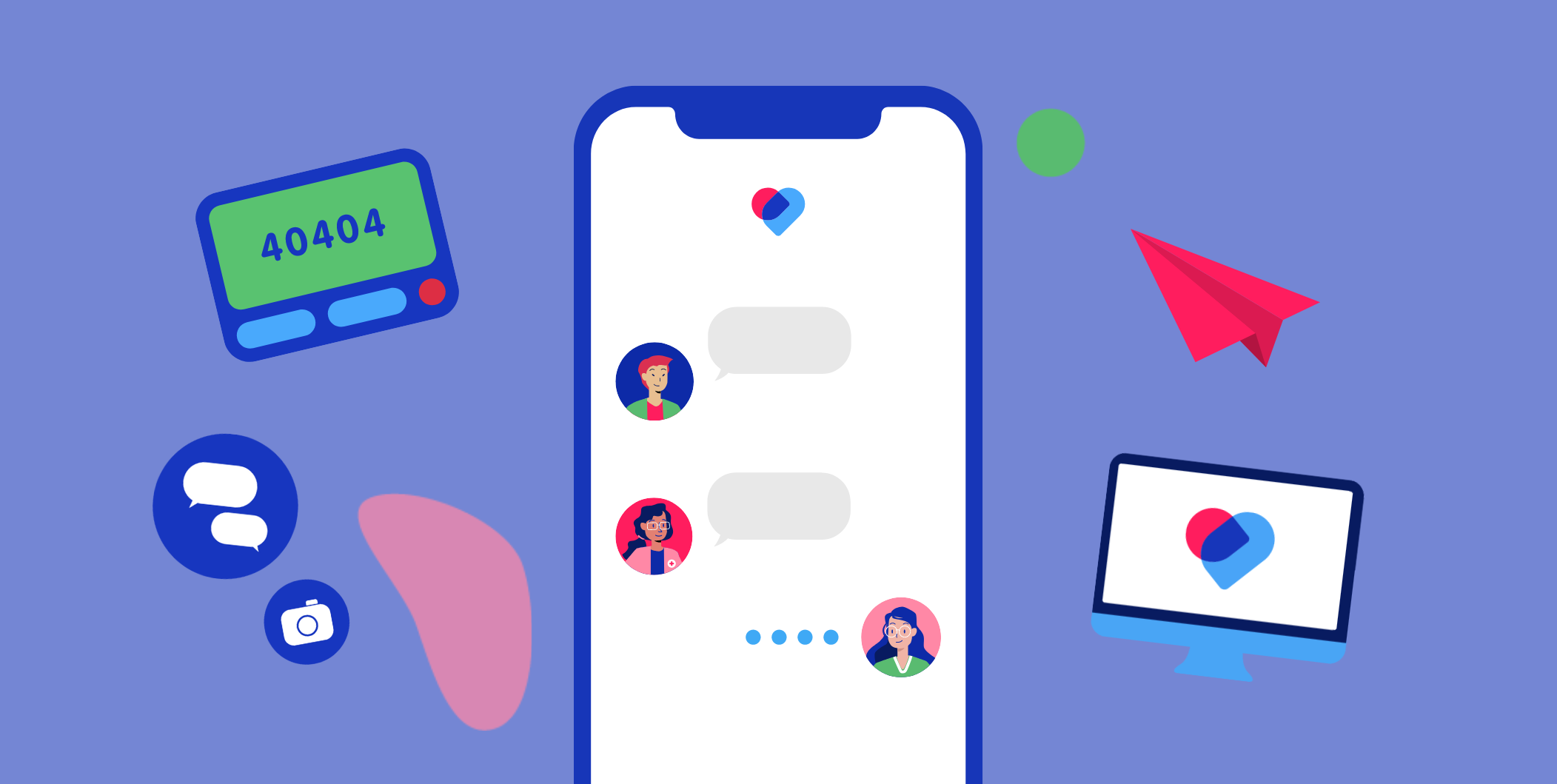Nov 5, 2025
How messaging apps are replacing pagers for healthcare teams
May 24, 2023 - Blog
Pagers have been a prominent healthcare communication tool for decades, but with the rapid advancement of technology, the healthcare industry is increasingly embracing modern communication methods. Pagers, the once-go-to device for care providers, are swiftly being ditched for other alternatives.
Why are care providers still using pagers?
Pagers have always been simple to use and require minimal training, which is why care providers have relied on them for so long. Some healthcare organizations are so familiar with pagers, they're unwilling to go through the hassle of updating their communication technologies. However, pagers are now considered too simple for the complex needs of modern healthcare professionals.
What's wrong with using pagers?
1. Expensive
After buying a device for each staff member, paying for repairs and replacements, and a separate subscription service: pagers can be quite costly for healthcare organizations to maintain. Not to mention the opportunity cost of lost time and efficiency.
In an article from CNN titled Pagers Cost Hospitals Billions, it was found that "physicians and nurses working in hospitals waste an average of 46 minutes a day when they use beepers to exchange information about patients, rather than modern alternatives like texting on smartphones", and "the cost of lost productivity due to outdated technology translates into more than $8 billion annually".
2. Outdated
Pagers use outdated technology that has made them less practical and less commonly used in today's fast-paced world. As technology continues to evolve, it is likely that pagers will continue to be replaced by newer and more advanced communication technologies.
In the UK, pagers were phased out and banned from use within the NHS. The main reason for this was due to their outdated technology, limiting the ways healthcare providers can communicate with each other.
3. Lack of two-way communication
One significant drawback of pagers is their lack of two-way communication capability. Pagers were designed primarily for receiving short messages or alerts, but they do not offer the ability to send a response or engage in a conversation.
This limitation poses a significant challenge in healthcare where collaboration between team members is essential. The absence of two-way communication leads to delays in decision-making, miscommunication, and potential errors. Another issue this poses is that often, caregivers are unaware of how urgent a request is and experience difficulties to prioritize patients.
4. Communication limitations
Pagers typically transmit short messages with limited characters, which can lead to ambiguous or incomplete information. Without the ability to provide additional details or context, recipients may struggle to fully grasp the message's meaning, leading to confusion or misinterpretation,
Pagers also lack the ability to provide feedback, ask questions, store message history, or include multimedia attachments. Visual information such as pictures and videos are restricted which can be detrimental in time-sensitive situations.
5. Information overload
A research article from NIH has determined that "many physicians view pagers as disruptive. Studies have shown that during a typical call shift, as the proportion of urgent pager messages increased, the resident workload increased and the majority of these messages were later determined to be non-urgent".
There is no way to escape non-urgent pages, so how do you prioritize? The answer is simple- you can't. The constant flow of alerts makes it difficult to filter information, which ultimately affects patient care.
6. Not HIPAA-compliant
Unfortunately, pagers do not meet the standards of HIPAA compliance. Pagers transmit messages over radio frequencies, and these messages can be intercepted by unauthorized individuals, posing a significant risk to patient confidentiality.
Additionally, pagers lack the necessary encryption and security measures to protect sensitive information. This means healthcare providers are unable to discuss Protected Health Information (PHI) through these devices, severely limiting communication between team members.
Alternative to pagers
HIPAA-compliant messaging platforms have emerged as a reliable and efficient alternative to pagers. They enable secure communication between healthcare professionals, ensuring the privacy and confidentiality of patient information.
Unlike pagers, messaging apps such as Celo offer real-time, multi-directional messages. With features like delivery status, read receipts, and the ability to send multimedia information: collaboration has never been easier.
Underpinned by robust security measures, such as end-to-end encryption and user authentication, HIPAA-compliant messaging has become a preferred choice for healthcare organizations looking to improve communication efficiency while adhering to strict privacy regulations.
Replacing pagers with a role-based messaging function
Celo's role-based messaging feature acts as a direct replacement for pagers. Allowing you to instantly find the person on duty for a particular job at any time, without the need to know that person by name.
You'll be able to see who's on-call, making it easy to send a quick message to the right person. Message receivers will be able to filter through non-urgent alerts, which helps to prioritize which messages to respond to first. While using more advanced features that accompany HIPAA-compliant messaging platforms such as Celo, healthcare teams can work more efficiently to deliver quality care.
By embracing these modern communication tools, healthcare organizations can enjoy enhanced efficiency, improved collaboration, and strengthened patient privacy.
Making the switch is easy! fill out the form below to get in touch with our team and get a full demonstration of Celo's features:

